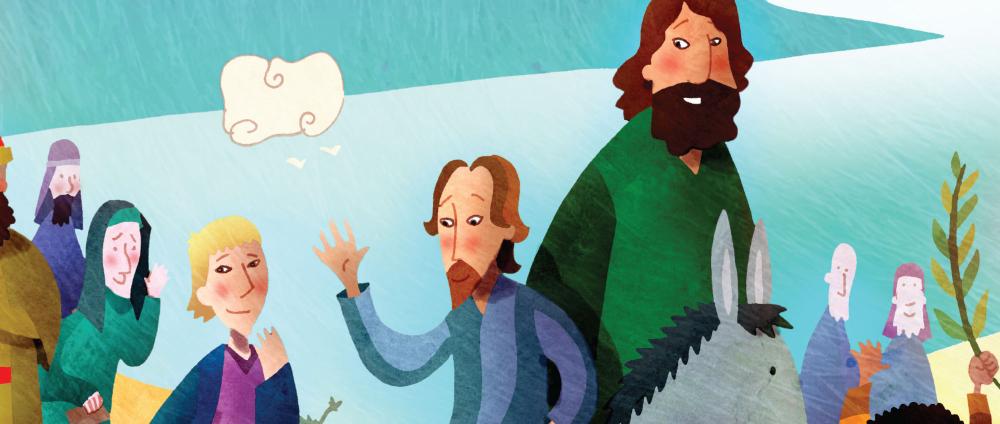
Jesus Died/Jesus Lives!
- Tell why God's people celebrate Good Friday and Easter.
- Feel secure and joyful knowing that Jesus, our Savior, is alive.
- Worship our risen Savior.
- Share the good news of Jesus' resurrection with others.
Leader Reflection
Today's lesson tells the story of Jesus' ultimate saving acts the way it should be told: together. So often people say something like, "Jesus died for my sins." It's true but it doesn't tell the whole truth. Jesus died and rose again for my sins. The resurrection is God's verdict on sin, God's approval of the obedience of his Son, and God's liberation for all of us enslaved to sin and death.
This also enables the children to fully enter into the pain and sadness of the cross while it is transformed into the joy and gladness of Easter.
The story of Jesus on the cross is the story of one who died in our place. Matthew brings this out vividly in the way he tells the story. The one who claims to be king of the Jews is mocked and spit on. A sign hangs over his twisted body, "The King of the Jews." They taunt him further: "He trusts in God, let God rescue him now if he wants him." Worst of all, Jesus cries out, in the words of Psalm 22, "My God, my God, why have you forsaken me?"
It's we who are meant to be God's royal representatives on earth, bearing his kingly image and reflecting his rule. It's we who have betrayed our trust in God, placing it instead in ourselves or others. It's we who ought to be God-forsaken, having rebelled against God and sinned against his holy law. Jesus is there on our behalf; he takes our place under the dark judgment of God.
In Matthew, the moment of Jesus' death has cosmic consequences. The skies darken at noon. The temple curtain is torn from top to bottom, revealing the Holy of Holies where no one can go. The earth shakes, rocks split, tombs open. Something awesome has happened. In Jesus' death the tectonic plates of history shift; the ground under our feet moves.
Jesus dies, he really dies. His body lies in the tomb for three days (as the Jews count days: Friday to sundown; Saturday, sundown Friday to sundown Saturday; and then Sunday, sundown Saturday to Sunday morning). Pilate sets a guard at the tomb, and everyone goes home in despair.
"After the Sabbath, at dawn on the first day of the week, Mary Magdalene and the other Mary went to look at the tomb" (28:1). They weren't expecting anything. It was grief and sadness that brought them. Boom! Another earthquake! An angel sits on the rolled-away rock, guards drop like dead men. "He is not here; he has risen," the angel says, and, to make it clear that this was no afterthought, "just as he said." Joy and fear and bewilderment break out all at once.
God has come to the God-forsaken one and raised him from the dead. God has come to the mocked king of the Jews, and established his everlasting reign. God has come to the realm of the dead and blown the trumpet of life. Everything is changed!
This is the center of our faith, the rock on which we stand. This is the new Exodus, the crowning of the King of the universe, the triumph of the Lamb.
Can you imagine what Jesus was experiencing as he spoke those words of God-forsakenness?
What does the rending of the temple curtain mean?
What do you find especially interesting or compelling about the way Matthew narrates the resurrection?
This is the heart of it all. Of all the stories you tell, let this one be told from the heart, with all the passion you can muster. Let this be an opportunity to share your undying love for the Savior who died and rose again for you.
Note: Because this is a special celebration, today’s session follows a slightly different format than usual; steps 2 and 3 are combined.
Steps

Get Unlimited Access!
Sign up for DWELL Digital to unlock all online leader resources, printable pages and session plans.
Call 800-333-8300 or Request Access
Already a subscriber? Log In
Learn About DWELL
DWELL helps kids find their place in God's Big Story. Learn more about this popular and trusted children’s ministry curriculum.

